- Herzing University was one of the first post-secondary institutions founded to prepare students for careers in the computer industry. Since 1965 business and computer-related education has been the focus of Herzing, even as it grew to encompass campuses in eight U.S. states and the founding of its Online Division, Herzing University Online. While expanding its campuses, Herzing also diversified its educational programs to include the fields of business management, electronics, healthcare, graphic design, and public safety. It also raised the level of credentials from diplomas to bachelor of science degrees and associate of science degrees at all U.S. campuses and master's degrees at the Online campus.
- Herzing University Madison opened in 1948 as the Wisconsin School of Electronics. Herzing University merged with the Wisconsin School of Electronics in 1970 to become Herzing University Madison. Herzing University Madison features a state-of-the-industry learning center designed to give technology and nursing students the best learning environment possible. The facility occupies a 40,000 square foot building in the business park of Madison. With a glassed in library to give students an open feel while they study, and electronics, computers, drafting and design, and nursing labs, Herzing University Madison is designed with the student learning experience in mind.
School Highlights
Herzing University-Madison serves 6,704 students (49% of students are full-time).
Minority enrollment is 62% of the student body (majority Black), which is more than the state average of 35%.
Quick Stats (2025)
- Enrollment: 6,704 students
- Private-state tuition: $14,200
- Acceptance Rate: 94%
- Minority enrollment: 62%
- Source: Integrated Postsecondary Education Data System (IPEDS)
Top Rankings
Herzing University-Madison ranks among the top 20% of public schools in Wisconsin for:
Category
Attribute
Diversity
School Overview
The teacher population of 130 teachers has stayed relatively flat over five years.
Herzing University-Madison
(WI) Community College Avg.
Carnegie Classification
Master's Colleges & Universities: Larger Programs
Associate's Colleges: High Career & Technical-Mixed Traditional/Nontraditional
Institution Level
Four or more years
At least 2 but less than 4 years
Institution Control
Private not-for-profit
Public
Total Faculty
130 staff
419 staff

School Calendar
Student Body
The student population of Herzing University-Madison has grown by 208% over five years.
The Herzing University-Madison diversity score of 0.72 is more than the state average of 0.55. The school's diversity has grown by 16% over five years.
Total Enrollment
6,704 students
5,109 students
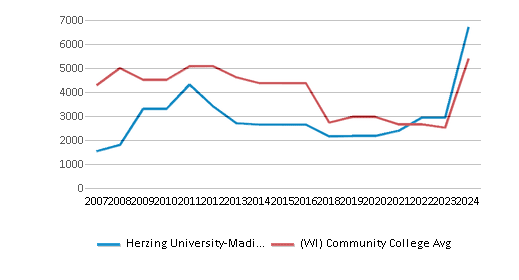
Student : Teacher Ratio
52:1
16:1
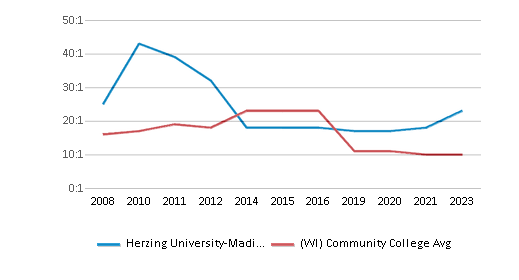
# Full-Time Students
3,279 students
798 students
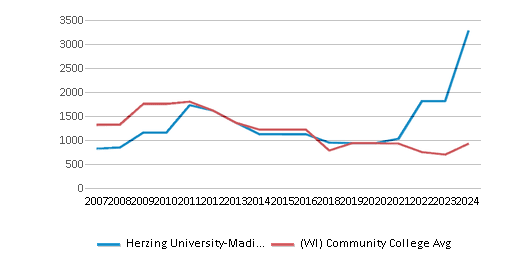
# Part-Time Students
3,425 students
4,385 students
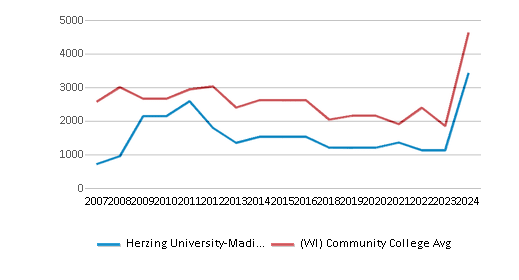
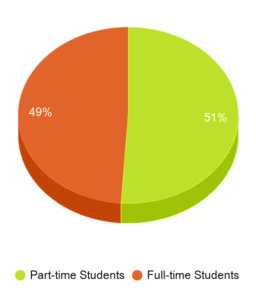
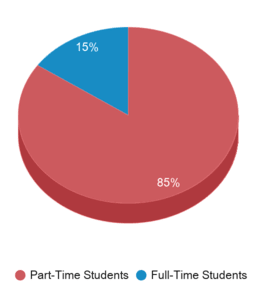
# Enrollment Undergraduate
391 students
373 students
# Full-Time Undergraduate Students
1,432 students
798 students

# Full-Time Graduate Students
1,847 students
27 students
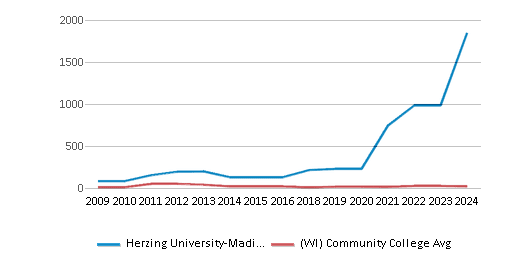
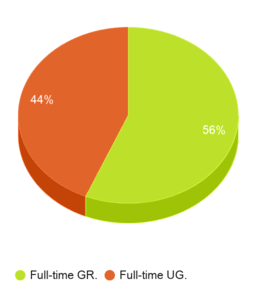
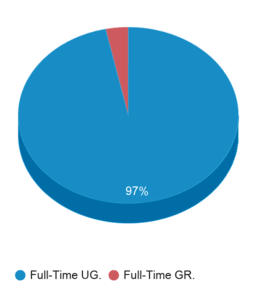
# Part-Time Undergraduate Students
2,482 students
4,624 students
# Part-Time Graduate Students
943 students
40 students
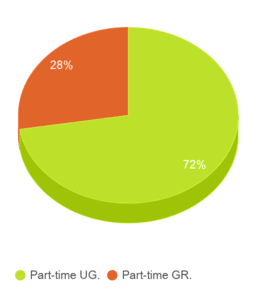
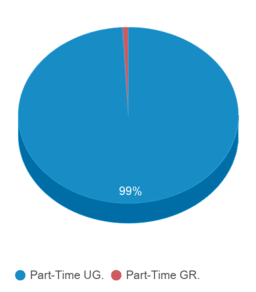
Total Dormitory Capacity
n/a
148 students
% American Indian/Alaskan
1%
1%
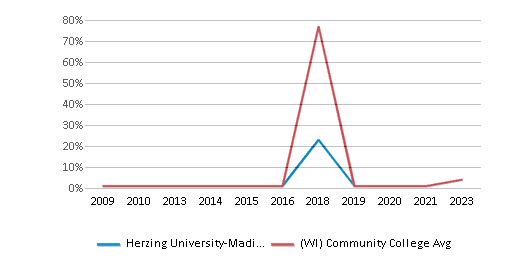
% Asian
5%
4%
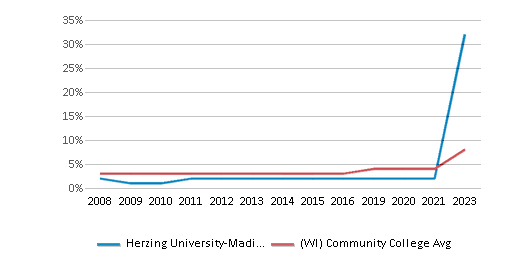
% Hispanic
12%
10%
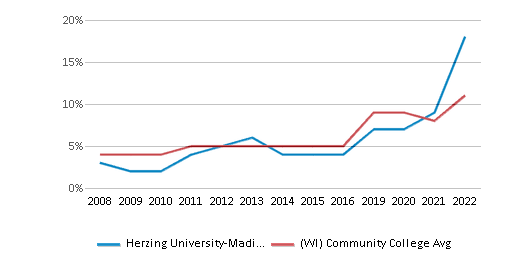
% Black
35%
9%
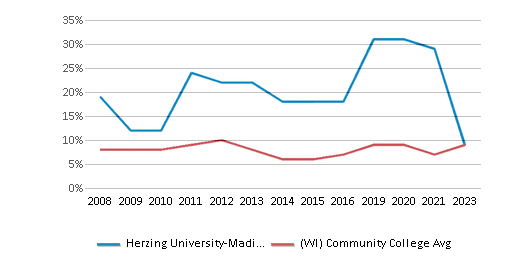
% White
38%
65%
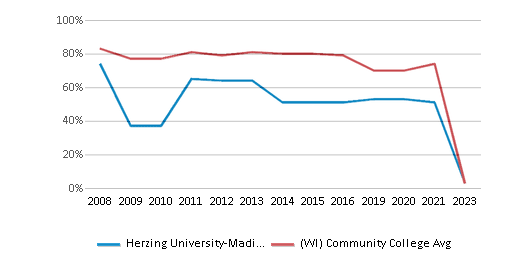
% Hawaiian
n/a
n/a
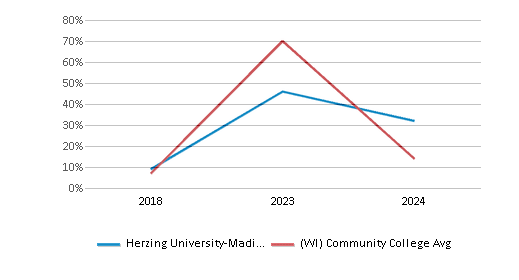
% Two or more races
3%
3%
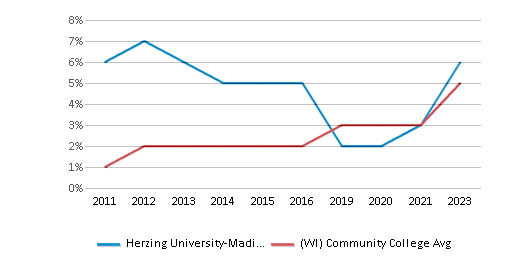
% Non Resident races
n/a
n/a
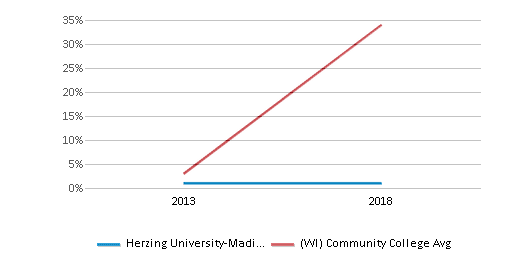
% Unknown races
6%
8%
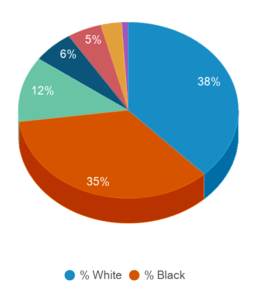
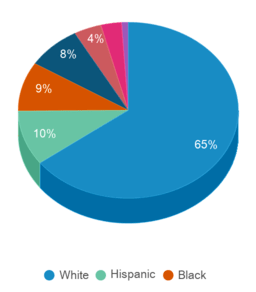
Diversity Score
0.72
0.55

College Completion Rate (Students who graduate in less than 4 years)
n/a
0.4772%
College Completion Rate (Students who graduate in 4 years or more than 4 years)
0.2192%
0.2192%
Average Graduate Earnings (10 Years)
$45,100
$34,300
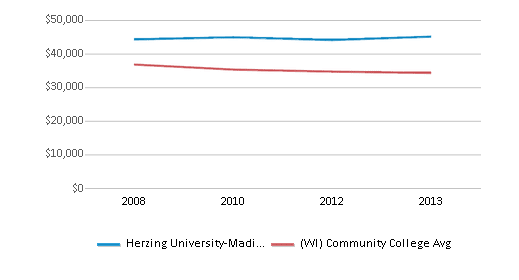
Tuition and Acceptance Rate
The private state tuition of $12,790 is less than the state average of $13,728. The private state tuition has declined by 9% over four years.
Private State Tuition Fees
$14,200
$13,728
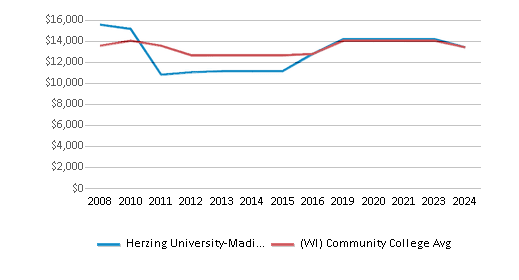
% Students Receiving Some Financial Aid
93%
76%
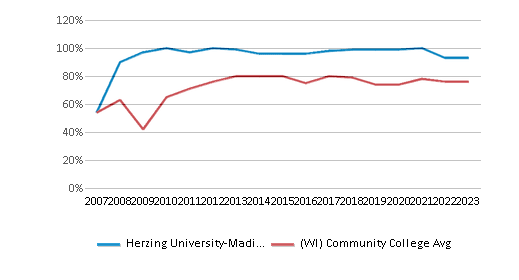
Median Debt for Graduates
$22,052
$11,250
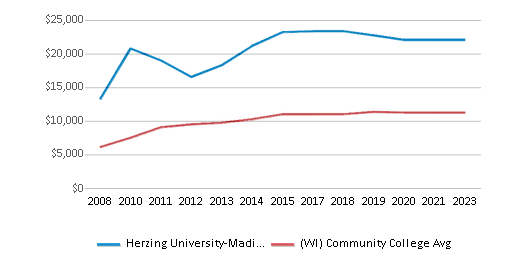
Median Debt for Dropouts
$6,747
$5,500
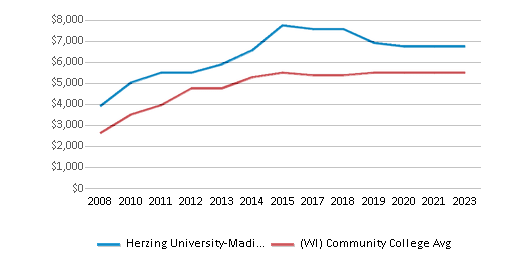
Acceptance Rate
94%
88%
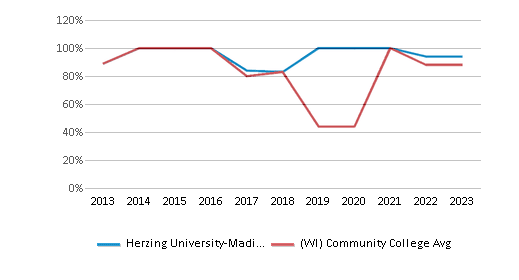
ACT Composite
n/a
21
ACT English
n/a
19
ACT Math
n/a
20
Source: 2024 (or latest year available) Integrated Postsecondary Education Data System (IPEDS)
School Notes
- Herzing University school systems operate in complete conjunction with their student-first philosophy. Each program is designed to make earning a degree convenient and accessible. They offer 3 flexible scheduling options, accelerated degree programs, and career services to help achieve their mission of being career focused, convenient, and caring.Herzing University is accredited by the Higher Learning Commission, 230 South LaSalle Street, Suite 7-500, Chicago, Illinois, 60614-1413, www.hlcommission.org, (800) 621-7400.
Frequently Asked Questions
How much does Herzing University-Madison cost?
Herzing University-Madison's private state tuition is approximately $14,200.
What is the acceptance rate of Herzing University-Madison?
The acceptance rate of Herzing University-Madison is 94%, which is higher than the state average of 88%.
What is Herzing University-Madison's ranking?
Herzing University-Madison ranks among the top 20% of community college in Wisconsin for: Diversity in US community colleges.
Recent Articles

Obtaining Your Bachelor's Degree at a Community College
Explore the evolving landscape of community colleges offering bachelor's degrees, addressing affordability, accessibility, and workforce needs.

A to Z of Community College Certificates and Courses
From business and healthcare to technology and skilled trades, the article showcases the breadth of options available to students seeking to enhance their knowledge, develop new skills, or pursue career advancement.

What is a Community College?
This comprehensive guide explains what a community college is, its history, and its role in higher education. It covers the types of programs offered, differences from four-year colleges, benefits of attending, and important considerations for prospective students, providing valuable insights for those exploring educational options.







